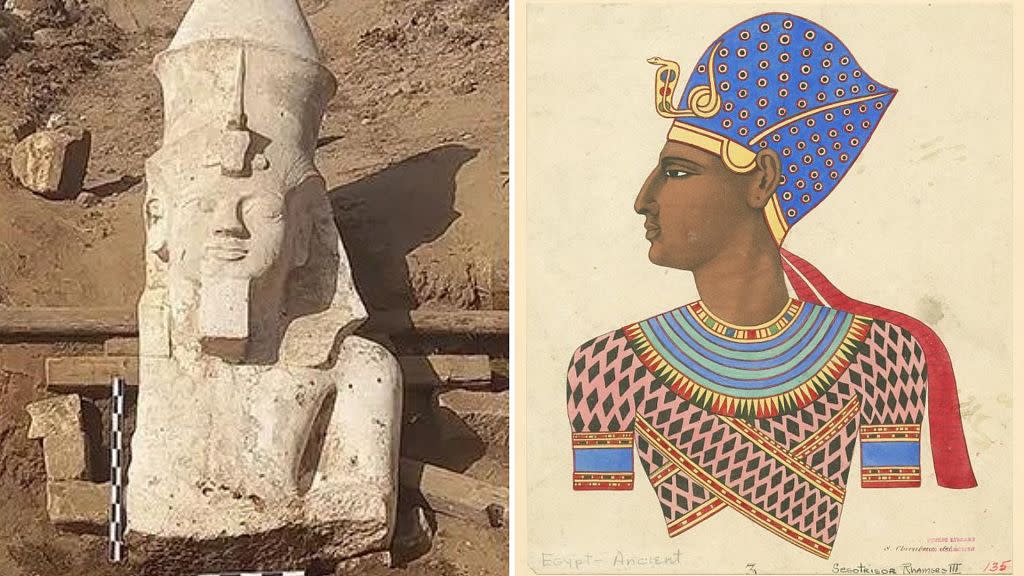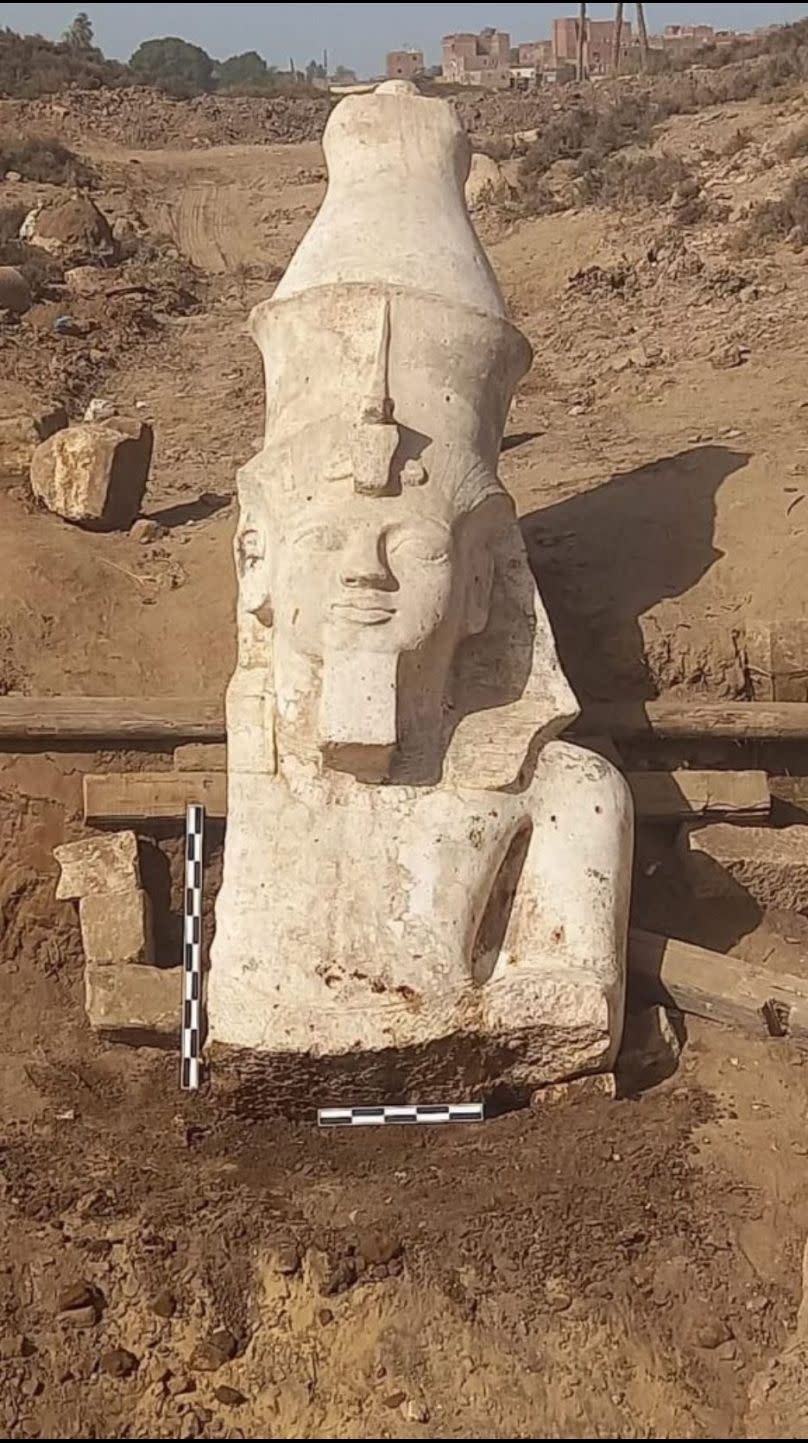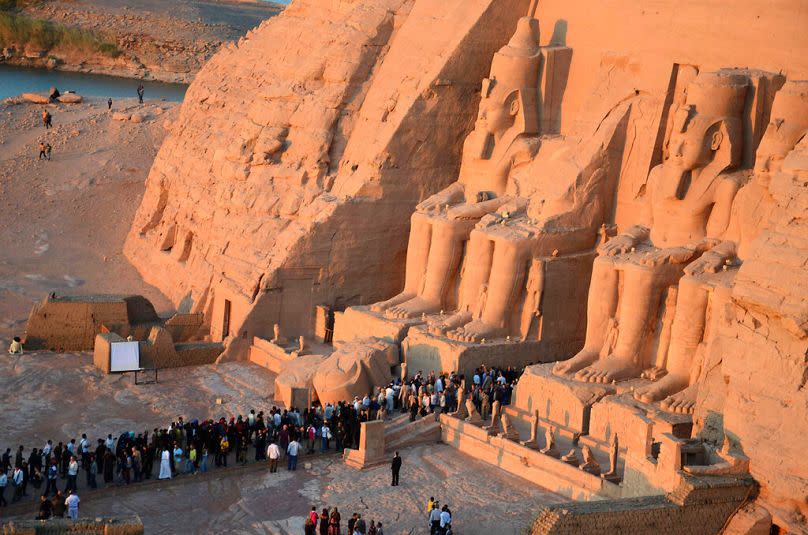Archaeologists unearth missing half of extraordinary Ramses II statue in Egypt

- Oops!Something went wrong.Please try again later.
The top half of a statue of Egyptian pharaoh Ramses II has been unearthed by archaeologists in southern Egypt.
Discovered at the El Ashmunein site, the 12.5-foot-tall limestone fragment was found by a collaborative effort between Egypt’s Supreme Council of Antiquities and the University of Colorado, led by Bassem Gehad and Ivonna Trnka.
The statue depicts the head, shoulders, and upper torso of King Ramses II, also known as Ramses the Great, adorned with a double crown and a regal cobra-topped headdress (a uraeus).
Further investigation revealed that the limestone piece complements a lower section discovered by German archaeologist Gunther Roeder, almost a century ago in 1930.
Efforts are underway to clean and prepare the statues for a potential reunion display.

Who was Ramses II?
Ramesses II, known as one of the formidable rulers of ancient Egypt, ascended to the throne around 1279 BCE and held sway until 1213 BCE. His 66-year reign is considered to be the pinnacle of Egypt’s might and glory.
Renowned for his military prowess, he orchestrated over 15 victorious military campaigns, securing Egypt's dominance across the Levant and Nubia.
But Ramses II wasn't solely a warrior; he also left an huge mark through monumental constructions. His vision stretched far and wide, as he commissioned the creation of awe-inspiring cities, temples, and monuments across Egypt, including the marvels at Karnak and Abu Simbel.

Hundreds of colossal statues of him can be found across Egypt.
The great ruler died around the age of 90 or 91 and was buried in the Valley of the Kings. His mummy was later discovered by archaeologists in the Royal Cache, and it is now on display at the National Museum of Egyptian Civilization, in Cairo.

